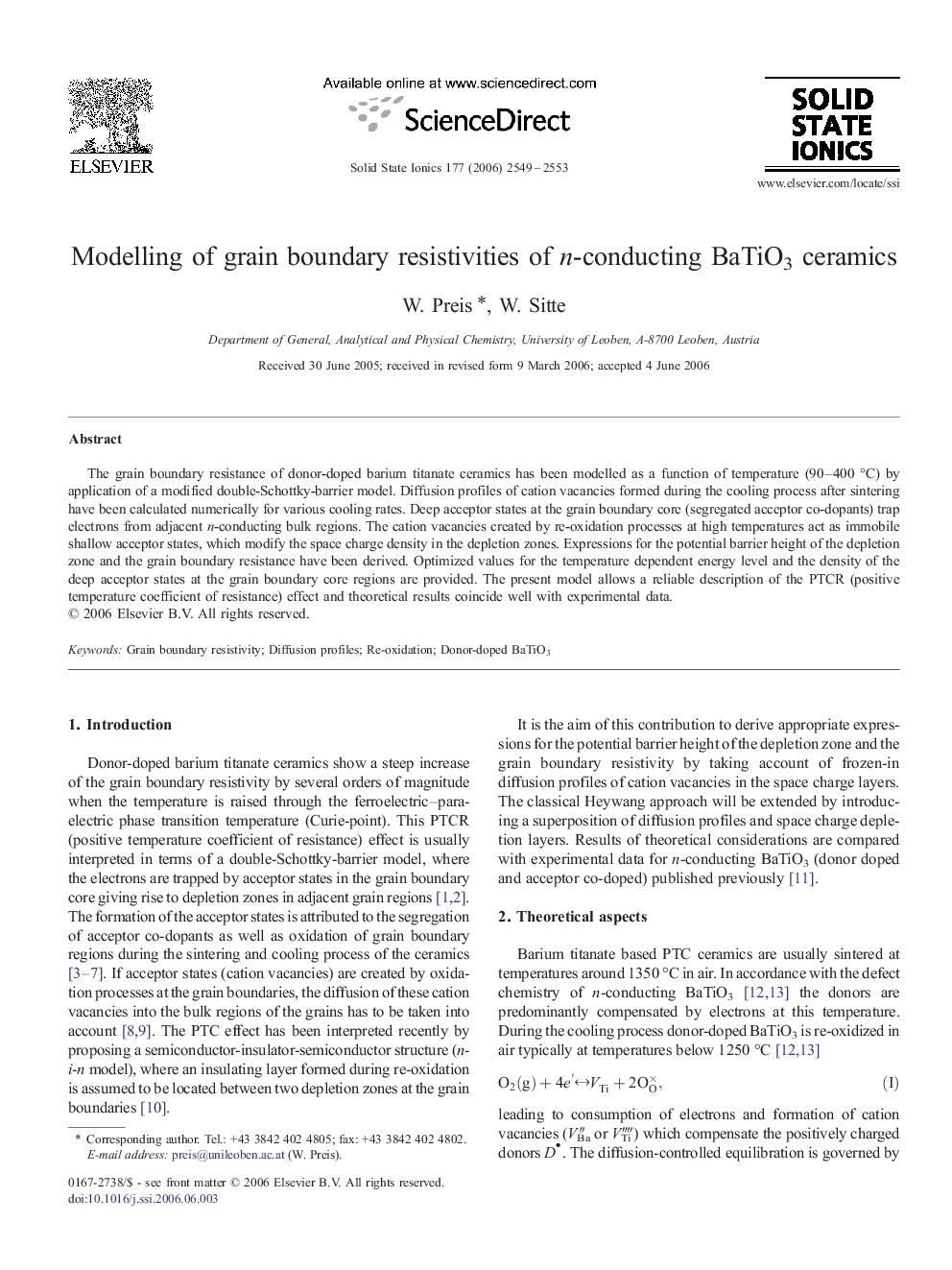| Article ID | Journal | Published Year | Pages | File Type |
|---|---|---|---|---|
| 1295525 | Solid State Ionics | 2006 | 5 Pages |
Abstract
The grain boundary resistance of donor-doped barium titanate ceramics has been modelled as a function of temperature (90-400 °C) by application of a modified double-Schottky-barrier model. Diffusion profiles of cation vacancies formed during the cooling process after sintering have been calculated numerically for various cooling rates. Deep acceptor states at the grain boundary core (segregated acceptor co-dopants) trap electrons from adjacent n-conducting bulk regions. The cation vacancies created by re-oxidation processes at high temperatures act as immobile shallow acceptor states, which modify the space charge density in the depletion zones. Expressions for the potential barrier height of the depletion zone and the grain boundary resistance have been derived. Optimized values for the temperature dependent energy level and the density of the deep acceptor states at the grain boundary core regions are provided. The present model allows a reliable description of the PTCR (positive temperature coefficient of resistance) effect and theoretical results coincide well with experimental data.
Keywords
Related Topics
Physical Sciences and Engineering
Chemistry
Electrochemistry
Authors
W. Preis, W. Sitte,
